I guess it’s time for me to finally admit that summer is really over.
As I write this on a chilly, wet day, I’m looking out the window at a lawn covered in russet colored leaves, pots of mums and pumpkins hanging from the trees. When we had that last blast of 80 degree weather a couple of weeks back I was thinking maybe there was still more summer left. However, my daughter who goes to school in Connecticut just sent a note saying it is snowing up there. Sadly, it’s clear now, it’s time to start to think about putting the garden to bed.
Looking past the russet leaves and the pumpkins I see much to do out there in my garden.
Following is a list of the chores I would like to accomplish before winter sets in. The list is long and I’ll be the first to admit that I don’t always accomplish everything on it. In a perfect world (which mine is not), I would love to do it all and then some but I think I will just try to do my best.
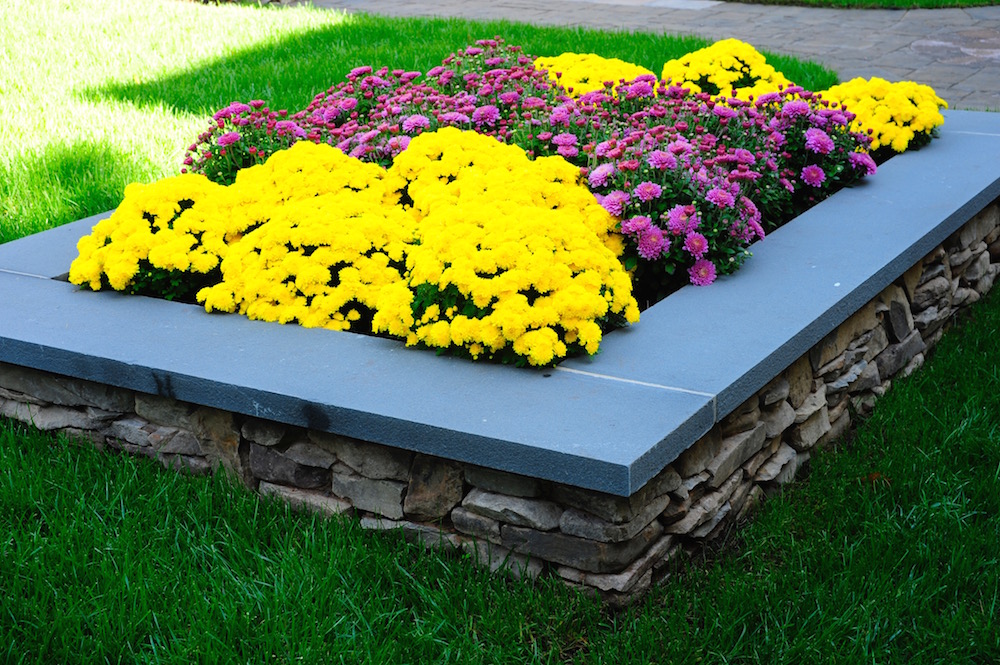
Before I start moving on that list, I usually take some photos of the garden beds, pots, etc. and make notes about what worked and what didn’t and what I might like to change or add for next year. At the moment, I probably think I’ll remember but I promise, come spring, I won’t remember a thing. Sometimes a particular planting of annuals flourished. Sometimes it didn’t. Perhaps something was too big for a space or another space needed filling in. I can use these photos over the winter to plan for spring. When that’s done, it’s time to get to work.
The first place I will start is clearing out my pots of fading summer annuals.
I’ll either wash, dry and stack the empty pots upside down ready for spring or use some for fall plantings.
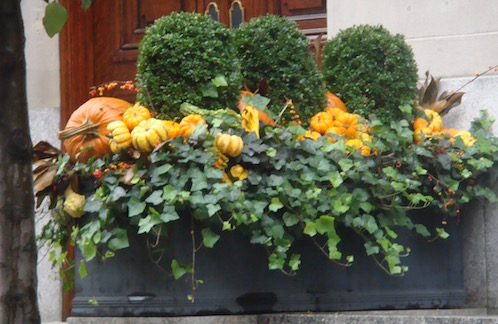
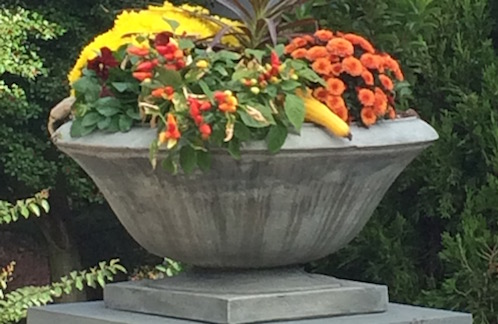
There are so many options for fall pots.
The possibilities are endless. You can use grasses, millet, mums, asters, pansies or cabbages, just to name a few. For the pots that don’t get replanted, it’s a good idea to clean them well so you insure that no diseases carry over to next year.
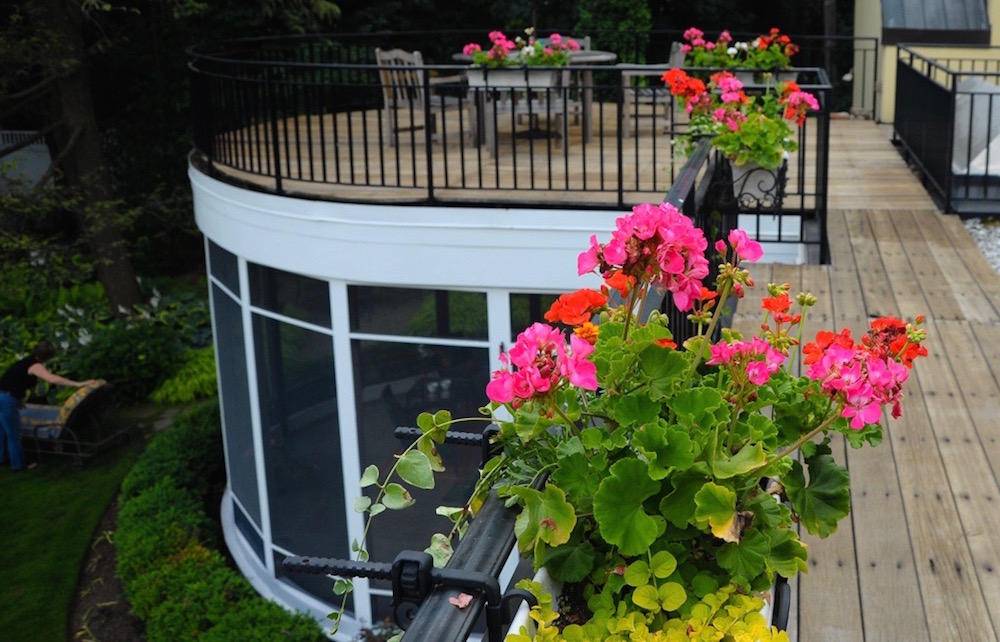
Before the first frost, I bring quite a few annuals into the house.
I’ve been reasonably successful keeping them over winter. I bring in my geraniums (too many geraniums I am afraid) but it saves me from buying and planting them again next spring. I put them in the sunniest windows, usually facing east and they flower happily all winter. I cut them back from time to time and finally in the early spring, I give them a good pruning, feeding and watering and get them back outside as soon as all danger of frost has passed.
November is ideal for digging dahlias and cannas and storing them indoors for the winter.
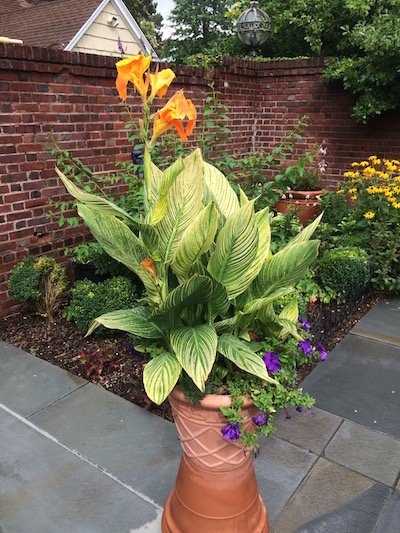 I find the best time to dig them is just after the first frost. Mine are still blooming out there and I would hate to miss a beautiful bloom but once the frost hits, that is it and they are ready to come in.
I find the best time to dig them is just after the first frost. Mine are still blooming out there and I would hate to miss a beautiful bloom but once the frost hits, that is it and they are ready to come in.
For the dahlias: I dig them, cut off the stems, brush away the dirt from the tubers and clean them thoroughly and store them in a crate. First, I put a few layers of newspaper at the bottom of the crate and then I add some bunched up paper to make a sort of cradle for the tubers giving them enough space and air. Then, I put them on a shelf in my garage and forget about them until spring. I know people often check on theirs occasionally but I am afraid I get a bit lazy and forgetful and so far that has never been a problem.
For the cannas: mine are in large pots. I cut back all the dead and brown leaves. I leave them in the pots and put them right into the garage and forget about them as well. In spring, I clean them up, water and fertilize and return them outside.
Now is also a good time to divide your herbaceous perennials.
Dig up and divide overgrown clumps and replant while the soil is still warm. Generally, I cut perennials back to about four inches. Following are some of the perennials in my garden that I cut in fall. It is only a partial list and if you are unsure of anything in your garden, just Google the name of your plant or shrub and look for information on the specific genus and species.
Perennials to Be Cut in Fall
…
Bearded Iris / Iris
Bee Balm / Monarda
Blanket Flower / Gaillardia
Cat Mint / Nepeta
Daylily / Hemerocallis
Japanese Anemone / Anemone x hybrida
Leopard Plant / Ligularia
Meadow Rue / Thalictrum
Peony / Paeonia
Perennial Sunflower / Helianthus
Phlox paniculata / Garden phlox
False Indigo / Baptistia
As for ornamental grasses,
I like to leave them alone for winter interest and then sheer them in spring. When it comes to shrubs, prune only late flowering shrubs such as abelia, callicarpa, hibiscus and clethera. Don’t prune lilacs or any other spring blooming shrubs. Pruning those now will insure NO flowers in spring.
If you haven’t already done so, cut down your peonies.
I generally cut mine earlier in the season as they are often full of powdery mildew by the end of the summer. I cut mine down to about an inch. Clean up and mulch the beds.
I know you will roll your eyes at this one, but it is good to give the garden beds one last weeding.
This prevents the weeds from maturing and going to seed, which only makes it harder to control them the following season.
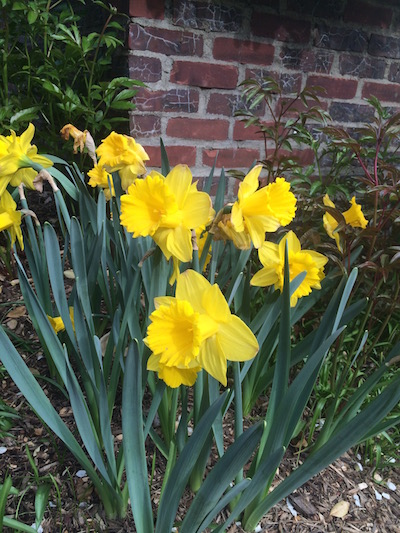 Plant your bulbs.
Plant your bulbs.
There are so many beautiful bulbs available from tulips to hyacinths. Some of my favorites though are alliums and daffodils as they naturalize and come back year after year and are of no interest to the deer. If you have any question about the health of your soil, have the soil tested at your local Cooperative Extension to determine Ph and nutritional levels and, if needed, add organic matter to the soil. A healthy layer of mulch is always a good idea.
At this point, the summer annuals in your beds have probably done their due and can be pulled.
Lastly, rake up any debris and fallen leaves. Too many leaves can retain water that could lead to root rot. In addition, they attract pests and raking will protect against insects and keep diseases from overwintering.
When you are all done (as if it is ever all done), clean your tools before you put them away for the winter.
One of the last things I plan to do is to protect the boxwoods around the edges of a parterre garden from the ravages of the snow plow. Before the first snow and before the ground freezes, I will drive the stakes in the ground so I will be ready to put up burlap to hopefully create a protective screen for them this year.
Continue to water trees and shrubs until the ground freezes.
Of course, I could go on as there are always more chores and work to be done. But let’s be realistic and actually try to get done what needs doing to protect and keep the garden warm over the winter so it is happy and healthy and ready to start blooming and growing once the spring comes again.
I for one can hardly wait…
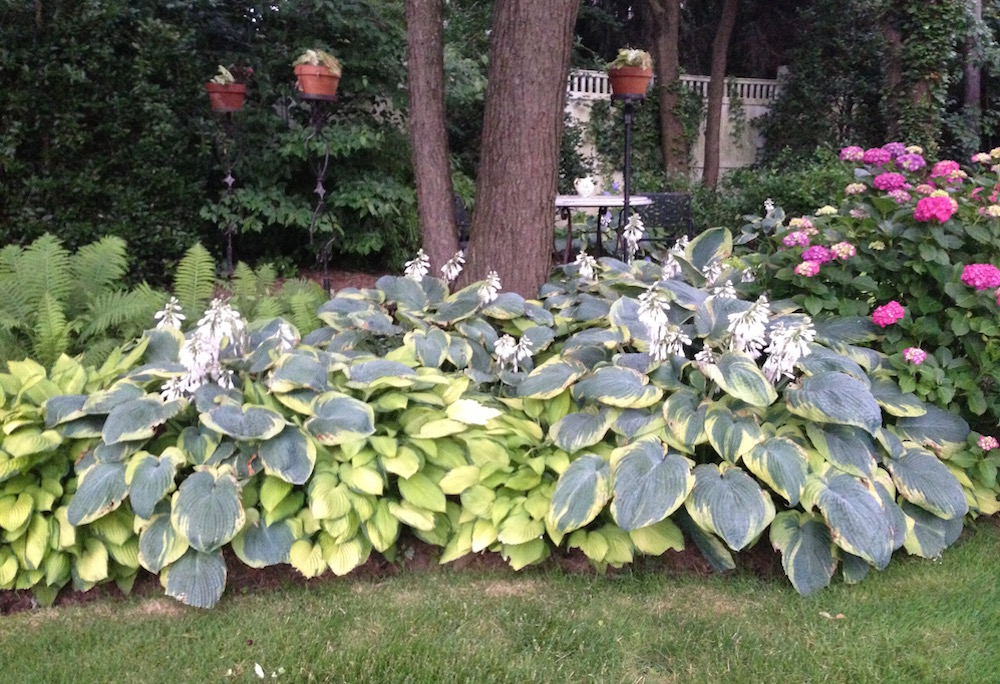


Yes, indeed!
Looking forward to seeing your garden in the spring…
xx